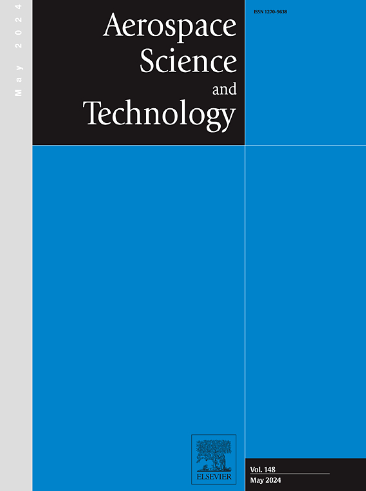Integrated optimization of de-spin actuator design and operating parameters for tail-controlled flight vehicle
IF 5.8
1区 工程技术
Q1 ENGINEERING, AEROSPACE
引用次数: 0
Abstract
Achieving high-precision guidance for high-spinning flight vehicles necessitates effective de-spin actuator design that simultaneously preserves flight stability. This study presents an innovative integrated optimization framework for Tail-controlled Flight Vehicles (TFV) with a dual-spin structure. We first propose a novel de-spin actuator design for the Aft Control Kit (ACK) to facilitate a stable low-spin environment while maintaining the forebody's high-spin stability. Crucially, a Phy-sense Neural Network (PSNN) is introduced for high-fidelity aerodynamic coefficient prediction, demonstrating a significant 58% error reduction compared to conventional Conv1D models by integrating fundamental fluid dynamics principles. Furthermore, we develop a decoupled integrated optimization strategy based on quantitative sensitivity analysis. This strategy, combined with a seven-degree-of-freedom (7-DoF) ballistic model, systematically optimizes the de-spin fin's configuration and operating parameters. The comprehensive framework significantly improves both overall flight performance and de-spin effectiveness. Simulation and experimental results rigorously validate the proposed design's capabilities, offering valuable methodological insights for the advanced design and optimization of future high-spinning vehicles.
尾控飞行器去旋作动器设计与运行参数集成优化
为实现高自旋飞行器的高精度制导,需要有效的去自旋致动器设计,同时保持飞行稳定性。提出了一种创新的双自旋尾翼飞行器(TFV)集成优化框架。我们首先提出了一种新颖的尾部控制套件(ACK)的去自旋驱动器设计,以促进稳定的低自旋环境,同时保持前体的高自旋稳定性。最重要的是,引入了物理感觉神经网络(PSNN)进行高保真气动系数预测,通过整合基本流体动力学原理,与传统的Conv1D模型相比,误差降低了58%。在此基础上,提出了一种基于定量灵敏度分析的解耦集成优化策略。该策略与7自由度弹道模型相结合,系统地优化了脱旋鳍的配置和操作参数。综合框架显着提高了整体飞行性能和脱旋效率。仿真和实验结果严格验证了所提出的设计的能力,为未来高转速车辆的先进设计和优化提供了有价值的方法见解。
本文章由计算机程序翻译,如有差异,请以英文原文为准。
求助全文
约1分钟内获得全文
求助全文
来源期刊

Aerospace Science and Technology
工程技术-工程:宇航
CiteScore
10.30
自引率
28.60%
发文量
654
审稿时长
54 days
期刊介绍:
Aerospace Science and Technology publishes articles of outstanding scientific quality. Each article is reviewed by two referees. The journal welcomes papers from a wide range of countries. This journal publishes original papers, review articles and short communications related to all fields of aerospace research, fundamental and applied, potential applications of which are clearly related to:
• The design and the manufacture of aircraft, helicopters, missiles, launchers and satellites
• The control of their environment
• The study of various systems they are involved in, as supports or as targets.
Authors are invited to submit papers on new advances in the following topics to aerospace applications:
• Fluid dynamics
• Energetics and propulsion
• Materials and structures
• Flight mechanics
• Navigation, guidance and control
• Acoustics
• Optics
• Electromagnetism and radar
• Signal and image processing
• Information processing
• Data fusion
• Decision aid
• Human behaviour
• Robotics and intelligent systems
• Complex system engineering.
Etc.
 求助内容:
求助内容: 应助结果提醒方式:
应助结果提醒方式:


